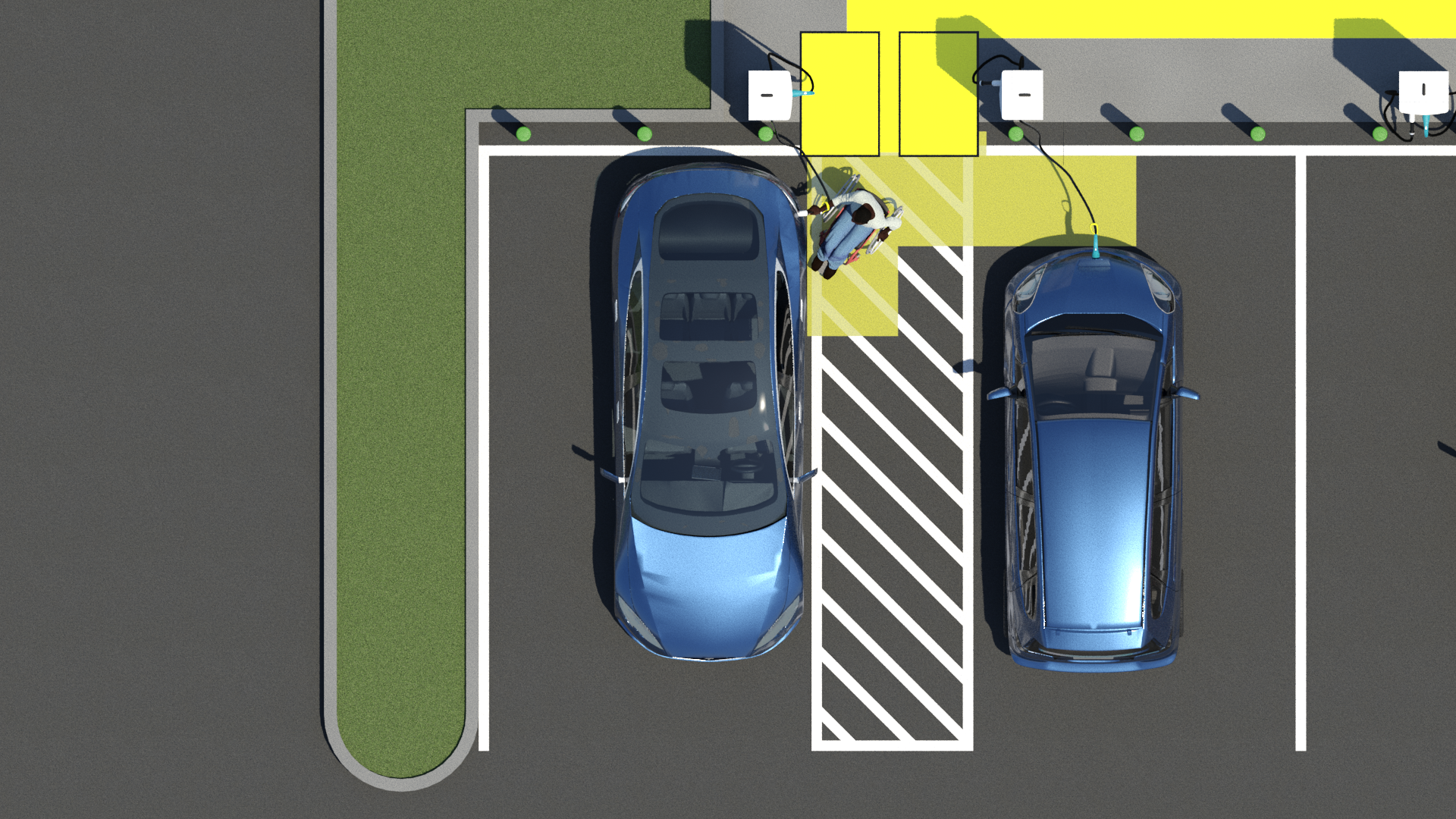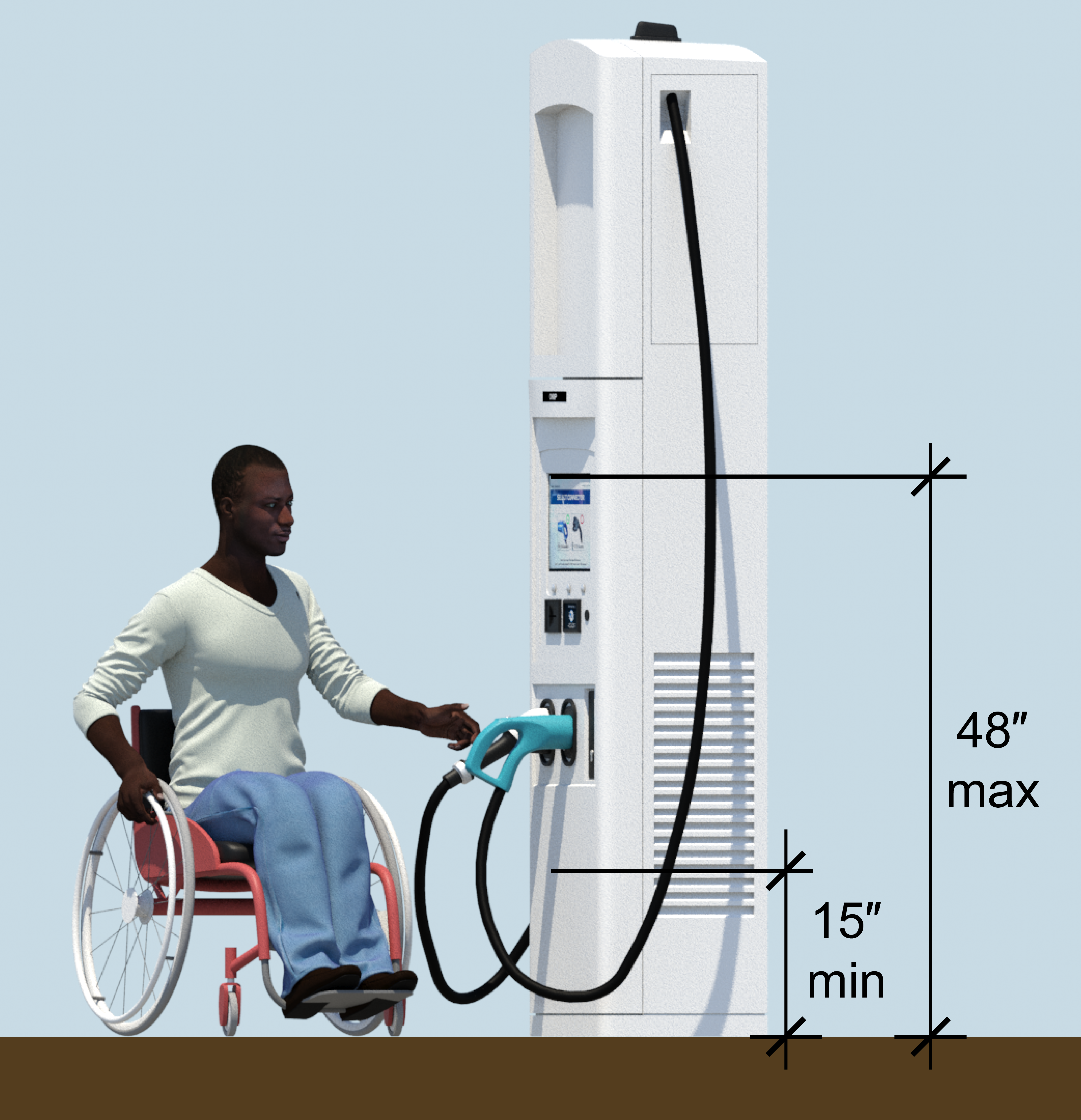

Blog
Our country’s electric vehicle infrastructure is growing, but accessibility requirements for EV parking spaces and charging stations have lagged behind. We look at how federal guidance and local building codes are beginning to address this gap.

As energy codes and other regulations continue to advance, many cities and states have implemented requirements for electric vehicle parking. Providing sufficient accessible EV parking spaces is essential to ensuring that people with disabilities can drive the vehicle of their choice.
It can take a while for building codes and federal laws governing accessibility compliance to catch up to the latest trends.
For years, the required number of accessible EV parking spaces and the technical criteria for those spaces were not specifically defined, leaving designers to interpret how to make this amenity usable for people with disabilities.
Now, although federal requirements have not yet been adopted, the US Access Board has published Design Recommendations for Accessible Electric Vehicle Charging Stations.
Additionally, many local jurisdictions like New York City, New Jersey, California, and authorities that adopt the 2021 edition of the International Building Code, among others, have added specific scoping and technical requirements for accessible EV parking spaces.
The minimum number of accessible EV parking spaces varies by jurisdiction. At least one EV parking space must be accessible under federal laws like the Fair Housing Act and Americans with Disabilities Act. Some local building codes, like New York City, require up to 5% of EV spaces to be accessible.


As dictated by several jurisdictions, including New York City and New Jersey, and as detailed in the US Access Board’s Design Recommendations, an accessible electric vehicle parking space complies with the following:
Note that some jurisdictions permit the accessible EV space to be one of the required accessible parking spaces while others, like New York City, do not permit an EV parking space to count as one of the minimum accessible parking spaces in the project.
In most jurisdictions, the accessible electric vehicle parking spaces do not necessarily need to be reserved as an accessible parking space. However, some jurisdictions may require accessible EV spaces to be marked with the International Symbol of Accessibility or to be identified with signage indicating that those spaces should be occupied last.


Charging stations must be located so they do not obstruct the minimum dimensions for the parking space and access aisle. The images above show two potential options to achieve compliance.
A 30×48 inch clear floor space (30×52 inch for jurisdictions subject to A117.1-2017) must be positioned for a forward or parallel approach to the station controls. Bollards, curbs, or other elements cannot obstruct access to the station.
All station controls must be located within accessible reach range. For an unobstructed approach (e.g., a parallel approach with a reach depth of no more than 10 inches), controls must be fully operable from 15 inches minimum to 48 inches maximum above the ground surface.

As more jurisdictions adopt specific accessibility criteria for electric vehicle parking spaces, it is important to make sure that each project complies with all applicable requirements. Feel free to reach out to one of our consultants with questions about what applies to your project.
Written by Theresa D’Andrea, Accessibility Director
Steven Winter Associates